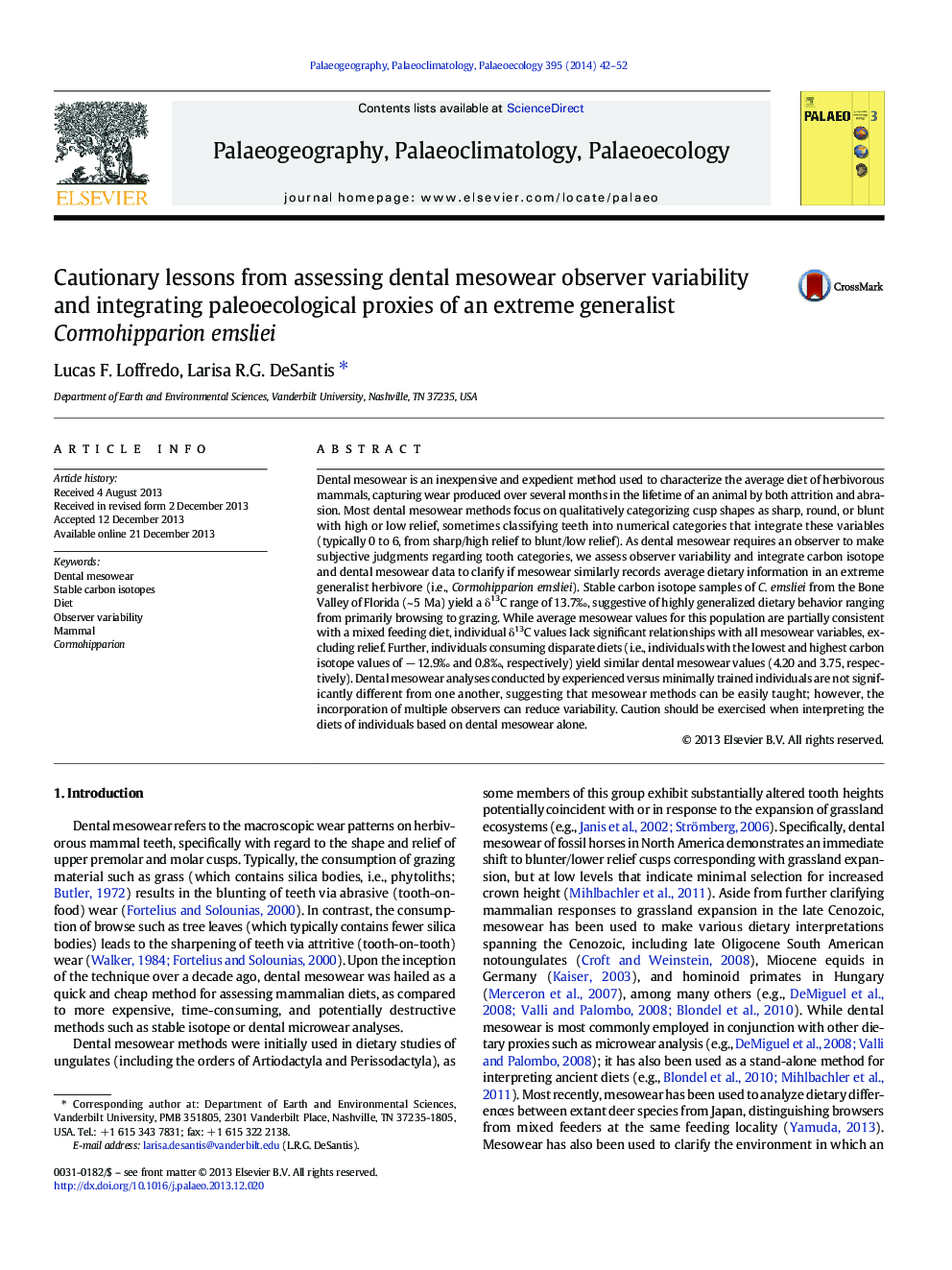| کد مقاله | کد نشریه | سال انتشار | مقاله انگلیسی | نسخه تمام متن |
|---|---|---|---|---|
| 4466384 | 1622195 | 2014 | 11 صفحه PDF | دانلود رایگان |
• We compare dental mesowear scores between experienced and inexperienced observers.
• We assess agreement of dietary interpretations using mesowear and carbon isotopes.
• Experienced and inexperienced observers show minimal differences in scoring habits.
• Mesowear and isotopic data lack predictable relationships in an extreme generalist.
• Mesowear is a coarse tool, useful at the population but not the individual level.
Dental mesowear is an inexpensive and expedient method used to characterize the average diet of herbivorous mammals, capturing wear produced over several months in the lifetime of an animal by both attrition and abrasion. Most dental mesowear methods focus on qualitatively categorizing cusp shapes as sharp, round, or blunt with high or low relief, sometimes classifying teeth into numerical categories that integrate these variables (typically 0 to 6, from sharp/high relief to blunt/low relief). As dental mesowear requires an observer to make subjective judgments regarding tooth categories, we assess observer variability and integrate carbon isotope and dental mesowear data to clarify if mesowear similarly records average dietary information in an extreme generalist herbivore (i.e., Cormohipparion emsliei). Stable carbon isotope samples of C. emsliei from the Bone Valley of Florida (~ 5 Ma) yield a δ13C range of 13.7‰, suggestive of highly generalized dietary behavior ranging from primarily browsing to grazing. While average mesowear values for this population are partially consistent with a mixed feeding diet, individual δ13C values lack significant relationships with all mesowear variables, excluding relief. Further, individuals consuming disparate diets (i.e., individuals with the lowest and highest carbon isotope values of − 12.9‰ and 0.8‰, respectively) yield similar dental mesowear values (4.20 and 3.75, respectively). Dental mesowear analyses conducted by experienced versus minimally trained individuals are not significantly different from one another, suggesting that mesowear methods can be easily taught; however, the incorporation of multiple observers can reduce variability. Caution should be exercised when interpreting the diets of individuals based on dental mesowear alone.
Journal: Palaeogeography, Palaeoclimatology, Palaeoecology - Volume 395, 1 February 2014, Pages 42–52
